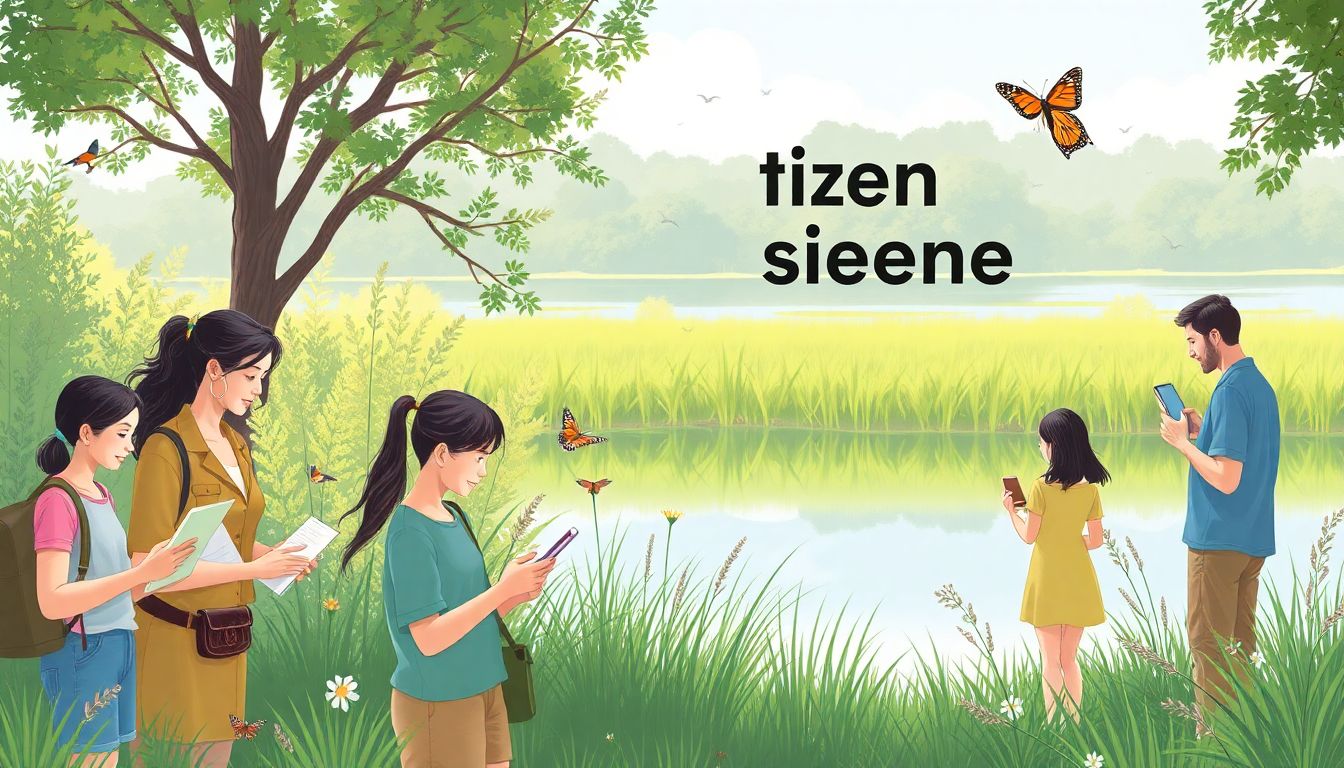Citizen science projects can seem a bit daunting, right? It’s easy to feel overwhelmed when you’re trying to gather community input or inspire people to get involved in research. You’re not alone in feeling this way; many of us have been there, scratching our heads over how to start.
But don’t worry—I’ve got your back! If you stick with me, I’ll share some fantastic prompts that will spark creativity and help you engage more participants. Together, we’ll unlock the potential of citizen science, making it both accessible and enjoyable.
From creating effective prompts to analyzing the data you collect, I’ll guide you through everything. Get ready to dive into examples, tips, and resources that will elevate your projects while keeping everyone excited!
Key Takeaways
- Citizen science projects can be engaging and rewarding with the right prompts and community involvement.
- Create specific questions that encourage participants to report observations and share insights.
- Involve the community by organizing events, providing updates, and recognizing contributions.
- Use ChatGPT to generate ideas, analyze data, and format prompts effectively for clear responses.
- Explore tools like Zooniverse and iNaturalist to enhance your citizen science projects and engage participants.

Top ChatGPT Prompts for Citizen Science Projects
Looking to harness ChatGPT for your citizen science projects? Here are some prompts to get you started.
1. Generate a list of potential citizen science project ideas focused on environmental conservation.
2. Create interactive engagement prompts for a community-driven birdwatching project that encourages participants to report sightings and share insights.
3. Draft a collaborative project question that invites citizens to contribute their observations for a local flora and fauna survey.
4. Suggest AI prompts for engaging the community in water quality monitoring initiatives, including questions for data collection.
These tips can help you effectively use ChatGPT to spur innovative ideas and enhance participatory engagement in scientific research.
How to Create Effective Citizen Science Prompts
Creating effective citizen science prompts is all about crafting questions that encourage participation and yield actionable insights.
Start by being specific about what you want the citizens to observe or report. For example: “Describe your favorite local park and any wildlife you’ve seen there.”
Consider the audience and their level of expertise. Tailor prompts to be user-friendly and avoid overly technical language.
Incorporate elements of inclusivity—ensure your prompts resonate with diverse backgrounds and experiences.
Use open-ended questions that stimulate discussion and deeper exploration. An example would be: “What changes have you noticed in your neighborhood’s ecosystem over the past year?”
Regularly review and adjust your prompts based on participant feedback to enhance their effectiveness.
Examples of Citizen Science Projects You Can Use with ChatGPT
If you’re brainstorming for citizen science projects, ChatGPT can provide practical guidance and examples.
1. Community Bee Monitoring: Participants can record bee sightings, contributing to a database that helps track pollinator health.
2. Urban Air Quality Tracking: Engage citizens to collect air quality data using sensors, encouraging a collaborative effort in understanding pollution sources.
3. Local Wildlife Mapping: Invite citizens to share their animal sightings and integrate this data into a community wildlife map.
4. Beach Clean-Up Initiatives: Design a project where participants log types and quantities of waste collected, analyzing the impact on local ecosystems.
These examples showcase practical applications of AI in promoting community engagement and fostering scientific curiosity.
Tips for Engaging Participants in Citizen Science
To make your citizen science project successful, you need to actively engage participants.
Start by fostering a sense of community among participants. Organize meetups or online forums where they can share experiences and tips.
Provide regular updates on project progress to keep participants informed and invested in the outcomes.
Use motivational strategies like recognition of contributions, which can enhance participant retention and enthusiasm.
Incorporate gamification elements, such as challenges or contests, to make participation fun and rewarding.
Finally, encourage feedback and suggestions from participants—they often have the best ideas for improving engagement!

Using ChatGPT to Analyze Citizen Science Data
ChatGPT can significantly enhance your ability to analyze citizen science data, making sense of the information collected by community members.
Begin by instructing ChatGPT to summarize the raw data: “Summarize the key findings from the following dataset of bird sightings and provide the total count of each species.”
Next, use prompts that encourage deeper insights: “Identify any trends in the water quality measurements recorded over the past year.”
ChatGPT can also help visualize data; try a prompt like: “Create a chart comparing the number of reported pollinator sightings by month.”
Don’t forget to ask for statistical analysis; for example, “Analyze the variance in temperature readings collected by participants across different locations.”
Incorporating AI into your analysis can lead to more comprehensive and actionable insights.
How to Format Your Prompts for Better Responses
Formatting your prompts is essential for getting clear and useful responses from ChatGPT.
Start with a clear directive: “List at least five ways to encourage community involvement in a local environmental project.”
Be specific about the context: “Provide detailed steps for organizing a beach clean-up event, including necessary materials.”
Utilize bullet points or numbered lists to enhance readability: “Outline the key factors to consider when designing a citizen science project.”
Additionally, consider including examples to clarify expectations: “Give an example of a successful wildlife monitoring project and what factors contributed to its success.”
Lastly, make your prompts actionable: “Suggest three activities for participants to engage with while monitoring air quality.”
Resources and Tools for Citizen Science Projects
Discovering the right resources is key to running effective citizen science projects.
Start by exploring online platforms like Zooniverse, which allow participants to contribute to a variety of scientific projects.
Use data collection tools such as iNaturalist, where users can share observations of biodiversity in their communities.
Another great option is Project Noah, which helps in documenting wildlife sightings and connecting with other citizen scientists.
Don’t overlook educational resources; check the Citizen Science Association’s website for valuable guides and toolkits.
Remember to leverage social media platforms for community outreach and promoting your projects to potential participants.

Resources and Tools for Citizen Science Projects
Finding the right resources is crucial to running successful citizen science projects.
Explore platforms like Zooniverse for diverse scientific projects that invite public participation.
Use data collection tools such as iNaturalist, allowing users to record biodiversity observations in their local areas.
Consider Project Noah, which helps document wildlife sightings and connect citizen scientists worldwide.
Check out resources from the Citizen Science Association for guides, toolkits, and best practices.
Don’t underestimate the power of social media; use platforms like Facebook and Twitter to promote your projects and engage with potential participants.
Additionally, explore educational materials that can enhance the scientific knowledge of your participants.
Provide tutorials or workshops to help your community understand the methods they’ll be using in the project.
Here are some prompts to leverage resources and tools in your citizen science efforts:
1. “List effective platforms for launching a community-based citizen science project.”
2. “Identify tools and apps that can assist participants in collecting and sharing environmental data.”
3. “Suggest educational resources for newcomers interested in getting involved in citizen science.”
4. “Describe how social media can be used to boost participation in citizen science initiatives.”
These actions will not only provide valuable resources but will also create a supportive environment for participants.
FAQs
Citizen science prompts are specific questions or tasks designed to engage the public in collecting or analyzing scientific data. They facilitate participation in scientific research, allowing individuals to contribute to projects meaningfully.
You can use ChatGPT to analyze citizen science data by inputting datasets directly into the model and asking it to summarize findings, identify trends, or generate insights. It can also assist in automating data interpretation processes.
Effective strategies include providing clear instructions, offering incentives, fostering a sense of community, and sharing meaningful outcomes from the project. Communication is key to keeping participants motivated and committed.
Consider resources like citizen science platforms, data collection tools, educational materials, and community outreach programs. These resources can help enhance your project’s visibility and effectiveness in collecting valuable data.
